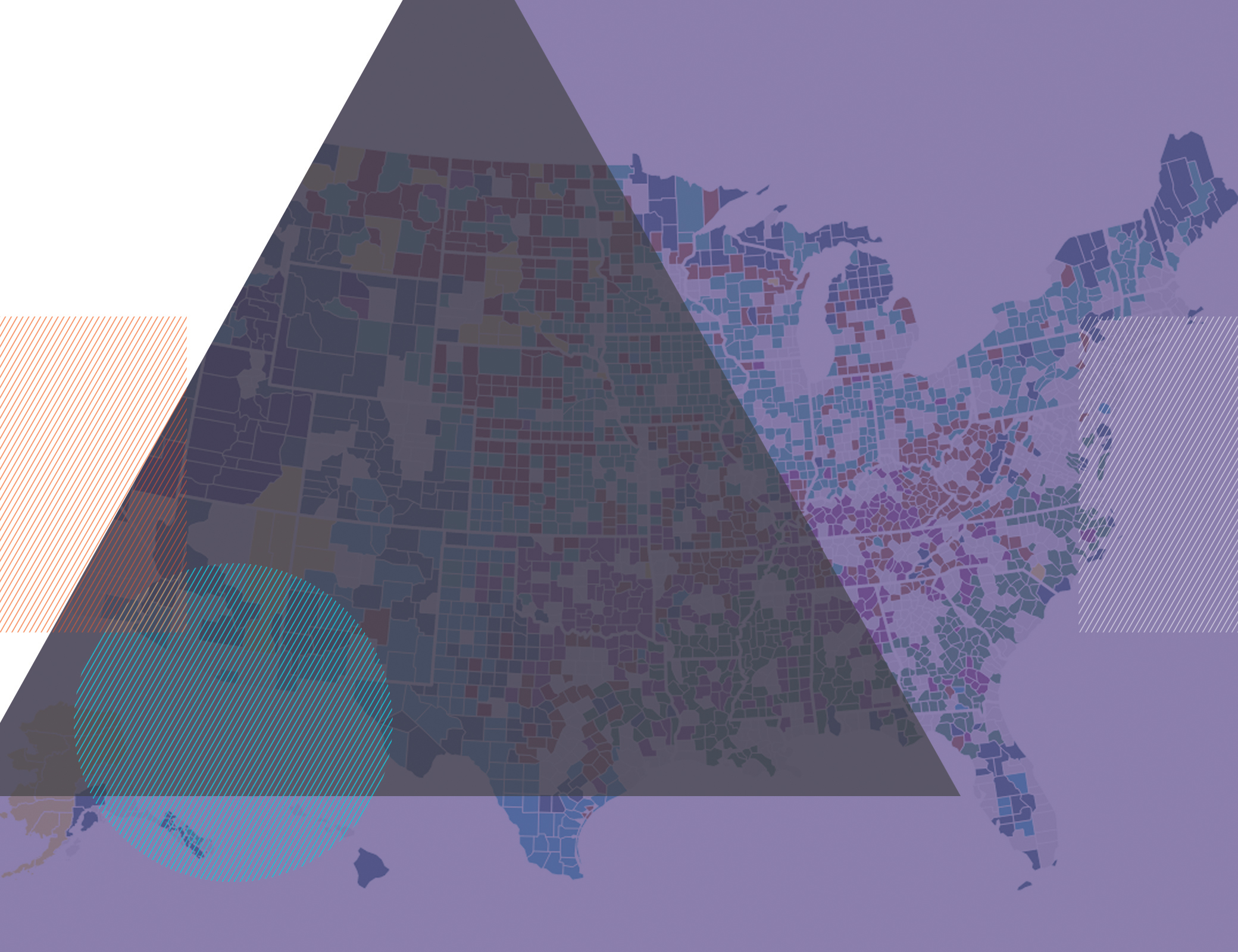Gove County, Kansas: Aging Farmland
The halls of Wheatland High School are marked by rows of empty lockers. In fact, the majority are empty, signs of a time when the classrooms were more crowded. Today some 35 students, grades 9-12, and 11 faculty members wander the halls here. Those numbers are on the minds of a lot of people in Gove County.
Many rural communities are getting smaller, but the population declines are palpable in Gove County, an Aging Farmlands community in western Kansas. In Gove, population 2,600, every loss is felt because each brings up questions about what the future will look like here. How long can these declines continue? Industrial Tech teacher Mark Heier, who graduated from Wheatland 35 years ago, wonders about the question.
“When I was in high school here we had 26 in our class,” Heier says. “We are now in a cooperative agreement with Grinnell, a nearby community, and our biggest class size is what, 16, 17. So I mean it just, you take that number over 35 years, our enrollment has dwindled that much.”
The school does a lot with its small staff and student body. There is a robotics program. There’s a laser engraving machine and a plasma cutter to work within the school’s shop department.
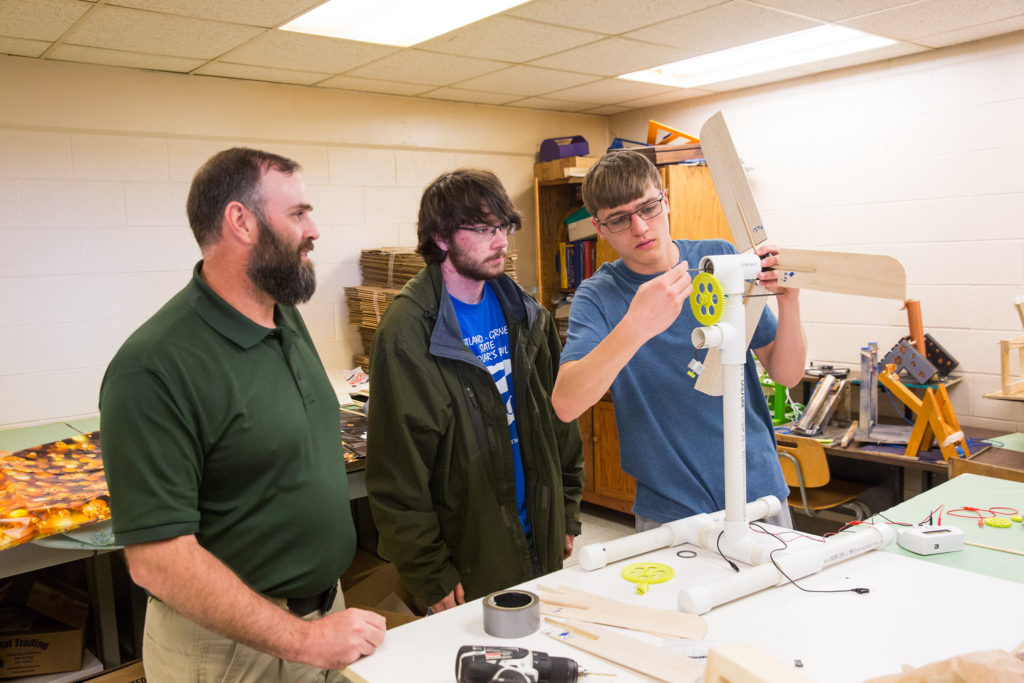
“I’m trying to show these kids that they can do something with these two machines. And do it here in Gove County and not leave,” Heier says. “Because our population is dwindling, we’re doing such a great job of feeding Kansas City and Wichita and places like that, but we got to start talking our own into coming back here.”
The drop in population is about more than empty lockers. It means a different kind of economy and different way of life for people who live in Gove. Fewer people means fewer stores on Main Street and less money circulating through the community. It also means fewer jobs to keep young people from moving away.
The hope is that the community eventually will find its new population equilibrium. Most people here acknowledge that multiple elements factor into the Gove’s changing face, but the farm-based economy may play the biggest role. Agriculture defines the community’s economy, culture, and daily life.
Gove County Index
Gove as an Aging Farmland Community
Daily Life
A Quiet Conservative Life
Health in Gove
Keeping Up With a Changing World
Gove as an Aging Farmland Community
Using a long list of measures, Gove County is a typical Aging Farmlands community. The county’s population is overwhelmingly white, non-Hispanic, 94.6%, which is nearly identical with the median for the larger type as a whole, 94%. Overall, the median for rural America as defined in this report is 88%. In terms of population numbers, Gove’s 2,631 people are close to the Aging Farmlands median of 2,850. And at 24%, the county’s senior citizen population lines up perfectly with the Aging Farmlands number of 24% over the age of 65.
On the basic economic measures, Gove looks to be doing fairly well. The median household income for the county is $47,000, under the overall median for the Aging Farmlands, which clocks in at $48,600, but in line with the larger rural America figure of $46,600. There is no housing crisis here – no overcrowding or high housing costs.
And this spring the unemployment rate was a remarkably low 2.7 percent – more than a point under the national average. More than three quarters of the people in the county own their own homes, a number slightly higher than 76% for the Aging Farmlands overall.
But Gove also sees some of the same challenges as other Aging Farmlands communities. Since 2010, the county has lost about 3% of its population, continuing a long-term decline. Overall, more than 76% of the Aging Farmlands communities have seen a decline in population since 2010. It was the highest number for any type in rural America, other than the African American South, which saw 79% of its rural counties lose population. And there is not a lot of economic diversity in the area. It’s driven by agriculture and ag-related sectors that employ 776 people and essentially produce 100 percent of the area’s Gross Regional Product, according to the State of Kansas.
Daily Life
The impact of agriculture is omnipresent in Gove and its largest community, Quinter, where the skyline is dominated by a massive, multi-silo grain elevator. Just around the corner on Main Street is New Age Feed, which specializes in cattle nutrition, and just down the street is the local Farm Bureau. Beyond that, the town has all the hallmarks of a small rural village. There are a few banks, a grocery store, and Ray’s Pharmacy, where locals can get their prescription filled, pick up a greeting card, or have a soda or a cup of coffee at the counter.
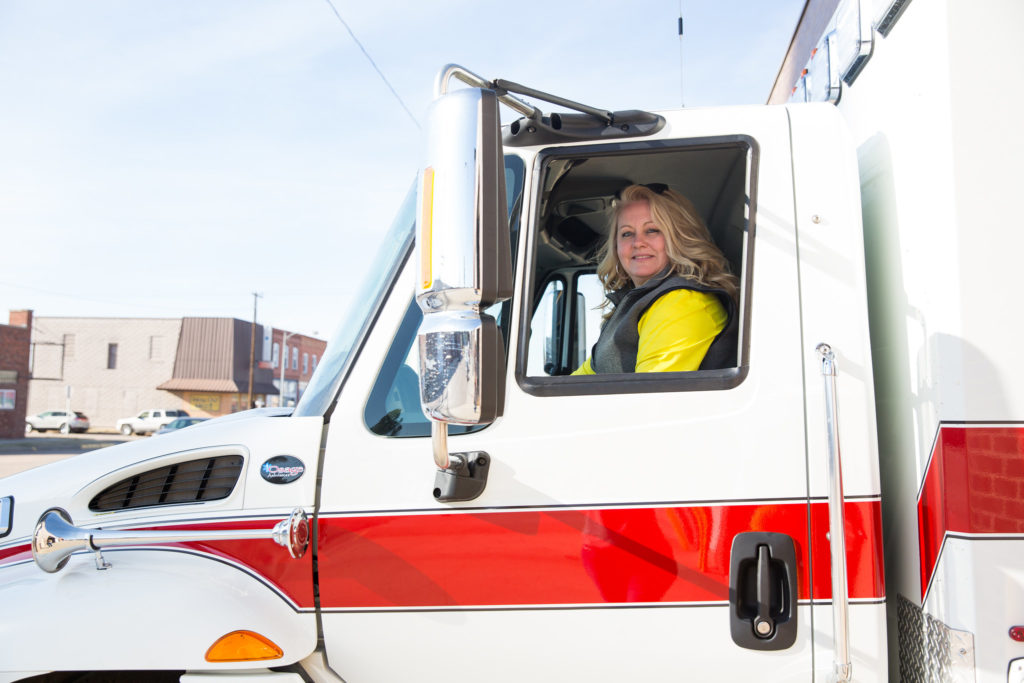
(c) 2019 Annabel Clark and (c) 2019 Josh Kohanek
The people in Gove rarely do just one thing. Most wear several hats, a function of the work ethic of the community and of need. Ericka Nicholson isn’t just Gove County Economic Development Director, she is also president of the local EMS service and team. Her husband, Steve Nicholson, isn’t just a science teacher at the high school, he also co-owns and runs the Center Pivot Restaurant and Brewery. Mark Heier, the teacher at Wheatland High School, also works on a farm.
Life revolves around family in the community and often around the family farm, where the roots usually run deep.
Gordon Jamison’s farm sits about three miles outside of Quinter’s Main Street on a dirt road leading to the ranch that has been in his family since the 1890s when his father moved here from Virginia. The main house on the property was purchased from a Montgomery Ward catalogue in the early 1900s. Jamison’s father was born on the ranch in 1924, and he was born in a nearby hospital in 1949.
But even if the ranch is rooted in the past, it isn’t stuck there. Jamison, who raises cattle and horses, has developed a strong internet presence. With the help of one of his tech-savvy sons, he conducts auctions to sell livestock online as well as on his ranch, and his website, jamisonranch.com, has photos and videos of the animals for sale.
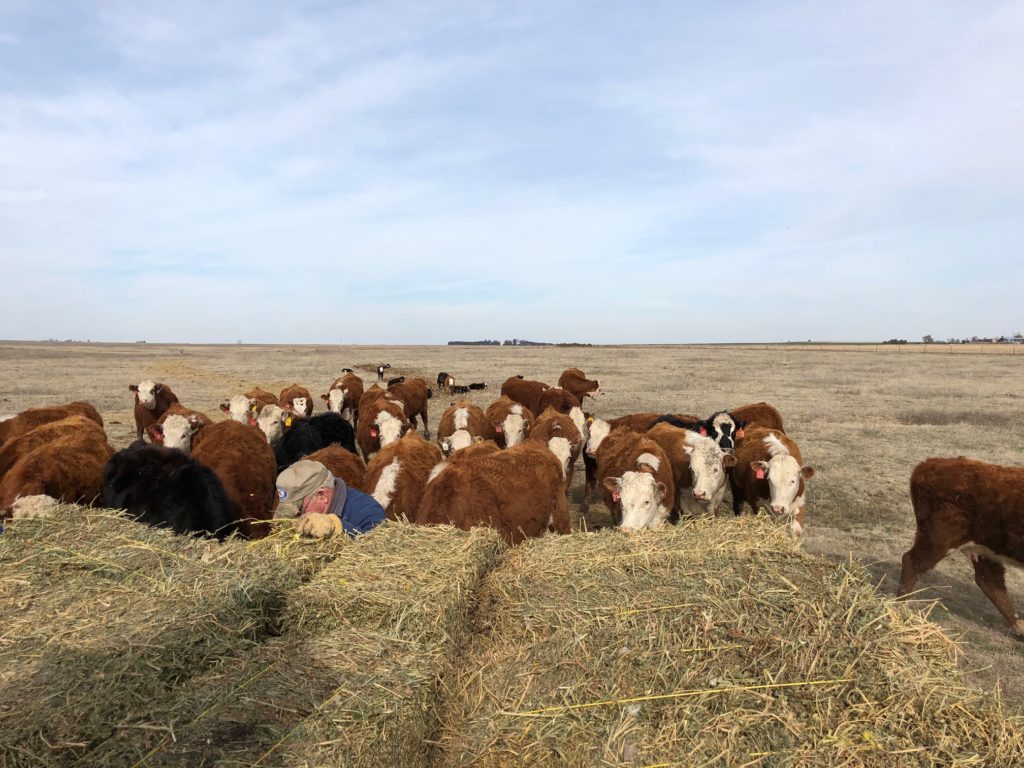
“Our horse sales have grown to become a recreational market, it’s become almost global. We’ve sold horses in Colombia, Mexico, the UK, and Canada,” he says. For him, the horse sales were a form of diversification, something that he thinks is critical in farming.
“[It’s] more and more critical in rural America that there be an outside income from another source; you either diversify or get an outside in category or all of the above, because it is hard to sustain,” Jamison says. “Agriculture has evolved into something that my grandfather would not comprehend. It takes a lot of financing. It takes a lot of different kinds of planning, takes a lot of money. And there’s never enough of it. So it almost takes a full-time businessman all year, so to speak.”
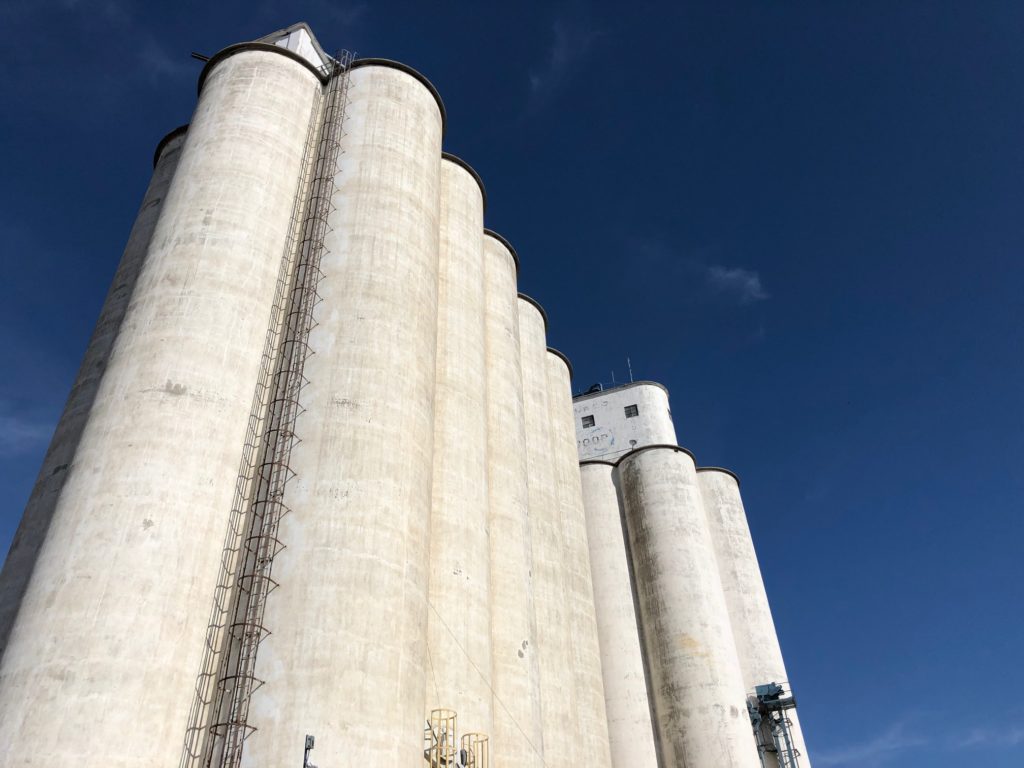
The economics of agriculture and its natural challenges weigh on the minds of many people in Gove County. The long-term trends in agriculture – higher land prices, farm industrialization – have led to fewer people tending to larger plots of land, which ultimately means smaller population. The land simply needs and has fewer people to work it.
“A lot of young people want to get into farming, but they just can’t,” says Kassie Remington, the Gove County Farm Bureau Board president. “Land prices are still high; input prices are crazy, really high.”
While farmers often tend to be independent by nature, their profession is subject to more outside forces than most others, ranging from weather to trade disputes. So conversations here can revolve around the price of a bushel of grain – wheat or corn. Many have that kind of information on the tip of their tongue or are happy to quickly check their smartphones to see where the number is at that particular moment.
And times have been hard in Gove lately between tough weather and the agricultural tariffs that have hit the farmers here. “We spend the bare minimum,” Remington says. “We raise our own cows. We butcher our own cows. We eat our own beef. We have our own chickens. We have our own gardens. We raise our own crops. I mean, we come to town for the bare minimum at the grocery store. … The grocery store has laid off a lot of employees because they can’t pay them because people aren’t spending what they used to spend.”
A Quiet Conservative Life
For many people in Gove, a quieter life away from the noise and action of the big city is a plus. Remote is a fair way to describe the county. Hays (pop. 21,000) is the nearest big city to Quinter and it sits an hour east on I-70. Garden City (pop. 27,000) is about two hours to the southwest. But bigger metropolitan areas, such as Denver and Kansas City, are more than four hours away.
Other than the interstate running through the county, Gove feels somewhat isolated. The landscape is largely a patchwork quilt of farmlands – from grain fields to animal pastures. And other than nearby Castle Rock, a smaller version of the geological formation that can be found in Badlands National Park, the horizon is largely a flat line far in the distance.
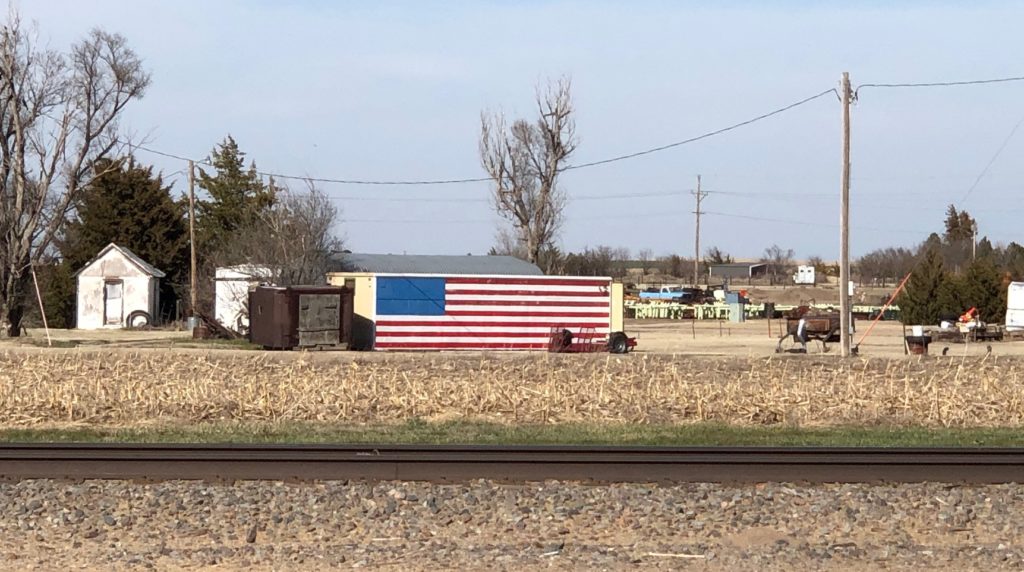
That environment leads to a different kind of mindset for the area, particularly in terms of seeking aid, says Ericka Nicholson, the county economic development director. “I wrote the ball field grant for the city Quinter; they have a brand new ball field. And there were people that didn’t want to have anything to do with that project, because it was grant money. And we don’t need handouts in Gove County, and I’m like, ‘Guys, those are your tax dollars. That’s a Department of Commerce grant, $226,000. That’s your money? Why do you want to be a part of this?’” It took work to convince the community.
And Gove’s setting leads to a conservatism that is less than comfortable with the cultural changes that have reshaped the country in last few decades. People in the county are not overtly hostile to issues like gay marriage, according to those in and around the LGBT community here, but people who are part of the LGBT community in Gove say overt acceptance can be hard to find as well. Some feel they have to leave to be comfortable, and note the challenges Sandra Stenzel, an openly gay woman, experienced in Trego County, an Aging Farmlands community just east. Stenzel was the director of Economic Development in Trego, and was fired in 2005 shortly after speaking out against a proposed amendment to ban gay marriage.
The incident was nearly 15 years ago, but it still carries weight in the area.
Health in Gove
By most standard health measures, Gove looks a lot like an Aging Farmlands community. The number of fair or poor physical and mental health days per month sits almost even with the medians for the type (3.2 for Gove versus 3.0 and 3.1 respectively for the type). On numbers such as food insecurity and diabetes, Gove is right in line with the Aging Farmlands. Gove does slightly better on adult obesity: Only 28% of residents are obese versus 33% for the type. The uninsured rate is a bit higher than the number for the type, but not far off, 13% versus 11%. And life expectancy in the county, at 77.8 years, is slightly under the 79.1 for the Aging Farmlands overall.
One area where Gove breaks the mold of rural America is in health care providers. It is a county of 2,600 that has access to five general practice physicians, all of whom are also obstetricians – and all of whom live near and practice at Quinter at the Gove County Medical Center, which is home to the Bluestem Medical practice. Two MDs started in September.
The center is not just an urgent care clinic, but a full family medicine clinic. The Bluestem doctors perform ultrasounds, radiology, mammography, and obstetrics services. At a time when rural hospitals are struggling or closing, Gove County Medical and Bluestem Medical keep adding physicians. Dr. Michael Machen has built a relationship with the University of Kansas Medical School to bring interns out to Quinter on a rotation to see what rural medicine is like and sometimes they stay.
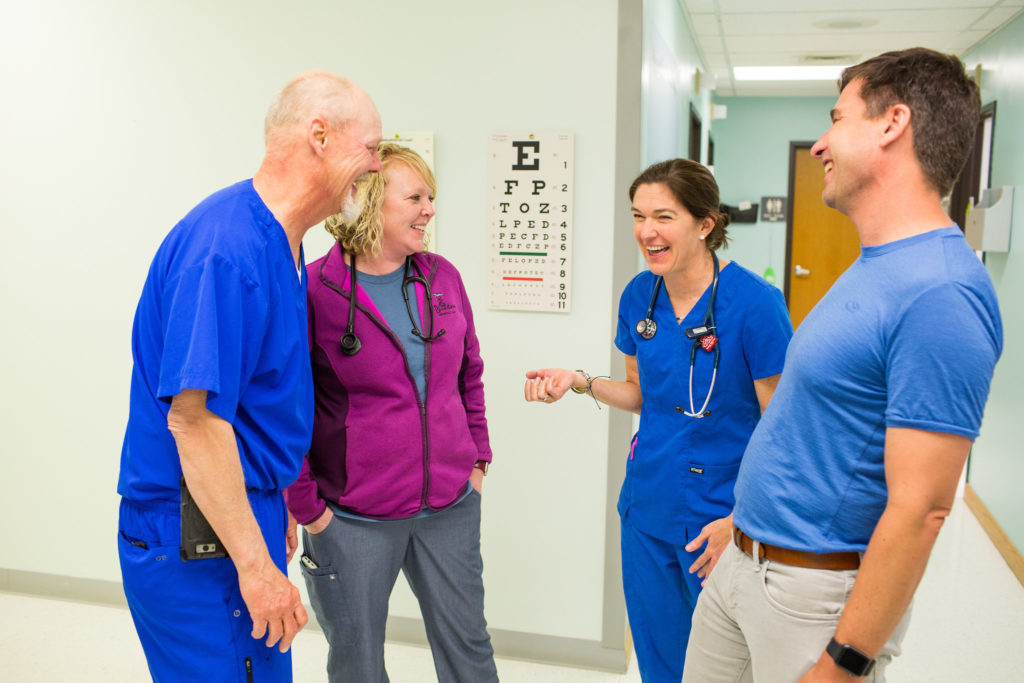
“We have medical students here all the time,” says Dr. Doug Gruenbacher. “I was a medical student here. And that’s how I ended up here. … Twenty-three years ago, I came out and spent a summer with Mike, and then I came back two years and I dragged Shelly along after we got married.”
Shelly is Dr. Shelly Gruenbacher, another physician on the team.
“Doug and Shelley brought in a young, aggressive good work ethic, and they’re good at what they do, and they’re good people,” Machen says. “And they’ve been very, very successful. And if you can perpetuate that, it sells itself. Students want to come here. We’ve got a waiting list of students to come to our practice to talk with us for their third year, fourth year.”
Drs. Michael Machen and Douglas Gruenbacher at Bluestem Medical in Gove describe why students like their rotations in the county.
For some medical students the draw is the opportunity to raise a family in a rural setting and to be a part of people’s lives in a direct way. The doctors know the kids they help bring into the world and they can work closely with older patients to try to better understand the health challenges they are facing.
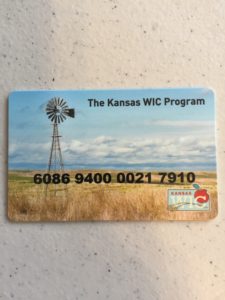
“We do virtually everything,” Machen says. “And it’s unusual to see that anywhere except in the rural areas. Yeah. You know, and I like what I do, and hopefully, you know, that that trickles down to their students.”
One big challenge in the area is mental health care. The center has two mental health professionals that come two days per week, but it’s not enough to meet demand. Telemedicine helps fill some of the holes, but Shelly Gruenbacher says it is at best a stopgap measure. “It always sounds better on paper than it really is because nothing takes the place of actually having a human being one-on-one with patient.” And that is especially true in a more rural setting where patients are still used to having a connection with their physicians.
Keeping Up With a Changing World
While many people in Gove like the insular aspects of the community, its remote nature has left it behind some of the larger changes that have remade commerce in the past decade or so. Gordon Jamison’s ranch may be on the internet, but most other area businesses are not. That means internet use habits and skills tend to be different for people here, and Gove doesn’t exist in the same way on Google as its more urban counterparts. As more and more of the world moves online that’s a challenge.
In Grainfield, Nicole Godek is trying to do something about that concern with a website and idea that she hopes will link Gove’s business (and those in other rural communities) to the outside world in a broader way: www.lovesmalltownamerica.com.
Godek’s model sets out to do that in two ways.
- First, it aims to help local businesses and organizations build a web presence and expand online reach at an affordable price.
- Second, it offers a single resource on many rural communities to help families and businesses find the right fit if they are looking to relocate.
Godek grew up in the area and was living in Omaha, Nebraska, with her family, when her husband suggested they move back after her father passed away. Godek is a graphic designer who could bring her job with her back to Gove. Her husband came with her, and they bought the local grocery store. But when she arrived home, after spending stints in California and Colorado as well as Omaha, she noticed something.
“When I moved back to Grainfield, we had an older house, and we wanted to make renovations, and I wasn’t familiar with those that did construction, and I figured ‘oh, I’ll just look online’ like everybody does, there was no information, valuable information, upto-date information about Grainfield or Gove county or anywhere close.”

Godeck and her sister, Kay Haffner, brainstormed and came up with the idea for Love Small Town America. The point, she says, isn’t just helping rural communities and businesses build websites, it’s helping them in a broader sense. “It’s not just having a website, it’s making sure you’re promoted, it’s making sure that it’s kept updated. And then being affordable, because a lot of small towns don’t have the bank accounts to be able to afford a huge full blown website,” she says.
She says there are 14,000 communities in the United States with 5,000 or fewer people, her target group.
And offline, Haffner co-chairs the Grainfield Community Development Committee, which uses fundraisers and grants to help build and rebuild the community. The GCDC has helped restore an old building and turn it into a new Post Office. They’ve worked to rehab buildings for a satellite clinic for Bluestem Medical and won grants to knock down dilapidated housing and build a tri-plex of new homes.
They are small changes, but ones that can make a big difference in an Aging Farmland community like Gove. And the work of the GCDC shows how a few energized people can make a difference in rural America.
But the long-term concerns for Gove and other Aging Farmlands are clear. Even as they do fairly well economically, they are getting smaller. The teachers at Wheatland High School know the empty lockers aren’t likely to be filled with more books and backpacks anytime soon.
